B2B Data: A Comprehensive Overview
B2B data is absolutely essential in today’s business landscape. It provides businesses with critical information about other businesses, including company identifiers, funding, revenue, and other data. By leveraging B2B data, organizations can make informed decisions, identify lucrative business opportunities, and gain a competitive advantage in the market. With accurate B2B data, businesses can easily find potential partners, assess market trends, and refine their strategies to drive growth.
Many organizations are now fully grasping the significance of utilizing data-driven B2B data. In this article, we will give you a complete guide to B2B data, its benefits, potential trends, and use cases. Join us to learn more.
What is B2B data?

To put it succinctly, B2B data is a variety of relevant information about other businesses that can assist a company in optimizing its business process, marketing, and sales strategies by offering insights into business requirements. Companies can utilize this information to generate more business opportunities and gain an understanding of market trends and behavior, leading to elevated growth.
For example, let’s consider a manufacturing company specializing in producing premium furniture for commercial use. By leveraging B2B data, such as contact information, purchase history, and other metrics, the company can identify potential clients and tailor their marketing and sales efforts to the specific needs and preferences of those businesses. This targeted approach through B2B data acts as a strategic tool that increases the efficiency of their outreach efforts.
What does B2B data entail?
B2B data comprises various data sources that can be broadly categorized into two groups
Internal data
Third-party external data

Let’s briefly explore some common external data sources


Platforms like LinkedIn are excellent sources of employee data; they comprise information about employees’ professional networks. This B2B data primarily focuses on talent and can be leveraged to enhance the recruitment process, carry out market analysis, and gain insight into a company’s employee pool.
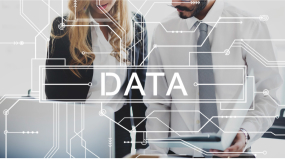
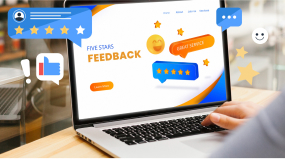
Websites featuring reviews, such as Glassdoor, provide valuable insights into competitors and target companies. This data analysis aids in recognizing signals, both positive and negative, which can be leveraged later for strategic business decisions.
- Did you know?
More than 65 million business leaders use LinkedIn, making it one of the leading B2B data sources for networking, lead generation, and market research.
The power of B2B data

Data as a Strategic Tool in Business Development
When it comes to B2B data, as previously iterated, it has a wide range of applications. Data in today’s environment is as vital as a breath of fresh air and is mainly used in three areas:

Lead generation
Organizations use B2B data for marketing and sales strategies that ultimately lead to improved targeting, enhanced lead qualification, and increased conversion rates. For instance, a cybersecurity solutions provider that caters to medium-sized financial firms can utilize B2B data to identify companies with conventional security measures in place. This allows them to tailor their marketing efforts by highlighting the specific solutions they offer, which can effectively address the security concerns of these companies. As a result, the customized targeting leads to a higher response rate and generates more leads.
B2B data can also be widely used for lead generation in other ways like lead nurturing, lead scoring, cold outreach, and account-based marketing.

Outbound sales
Marketing teams are frequently engaged in outbound sales, which involves reaching out to potential customers proactively for business opportunities. This can be achieved through various means, such as sales emails, direct calls, and social media outreach. B2B data is utilized to obtain contact information, which is extremely useful for successful outbound sales.
For instance, a company that wants to get in touch with the CTO of the financial firm can gain direct contact through a B2B data provider, which further simplifies the process for seamless outbound sales opportunities.

Analytics
Organizations can use B2B data for analytics, which is beneficial for research and insight generation. By using the data, companies can assess potential risks, market growth, and competitiveness with counterparts. For example, using B2B data, a company can monitor its competitors’ employee reviews or business performance and can tailor its strategies to outperform them in the market.
Tangible business outcomes that B2B data provides
Here are potential business outcomes that can be achieved by using quality B2B data.

Increase in revenue growth

Improved efficiency and productivity

Insight into risk management

Expanded market reach

Enhanced marketing and sales strategies

Data-driven decision-making ability

Insights into customer behavior and customer retention

Insights into looming market trends

Maximized Return on investment (ROI)

Customized targeting for personalized marketing
Steps to get quality B2B data
Define the target audience
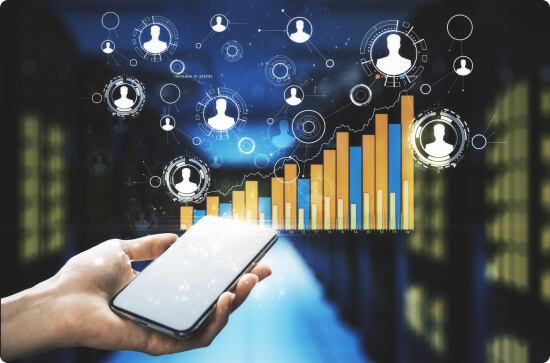
Acquiring quality data requires determining the right target audience that fits your business. To do this, you need to analyze your specific product or service and conduct an audit to gain a clear understanding of who will benefit from it. You can use focus groups, market surveys, social media, and web analytics to gather insight into your target base. By evaluating your current customer base, you can identify common characteristics and interests to figure out what potential customers are looking for. This will help you target demographics based on behavior, interests, and other relevant factors. Additionally, analyzing your competitors’ niche targeting strategies will also help you define your target audience in a more nuanced way.
Determine the type of data you need

The next step after determining your target audience is to figure out the type of data you need for the specific business endeavor. For example, if you’re planning an outbound B2B sales campaign, you might require data on business leaders’ job titles, company details, and contact information to tailor your outreach strategy effectively. There are four types of data segmentation that aid us in the process of determining the type of data you need. Here’s a brief breakdown of the types of data segmentation

Industry-based segmentation
This segmentation approach refers to the practice of categorizing businesses into specific industry sectors based on their operations. This type of data helps organizations understand the unique industry dynamics, needs, and challenges, resulting in targeted and precise business strategies. Additionally, this segmentation assists businesses with resource allocation and crafting campaigns tailored to specific industry preferences, leading to personalized communication with a higher chance of conversion rate. Overall, this type of segmentation helps businesses make better decisions, engage with customers efficiently, and achieve sustained growth and success.
Example: Data segmented based on sectors like healthcare, finance, technology, etc.

Regional-based segmentation
This segmentation divides the target market based on geographical regions. Businesses can use this type of data to tailor their products, services, and marketing efforts to specific geographical areas. It enables companies to focus on regional preferences and local market dynamics, which can be useful in improving business effectiveness and relevance in the region.
Example: A software service provider looking to expand its presence in San Francisco can leverage regional-based B2B data to pinpoint potential clients and streamline their marketing efforts, optimizing their regional expansion strategy.

Job-roles-based segmentation
Segmenting data based on job roles, positions, and functions like CEO, CTO, CIO, etc, enables customized communication tailored to their specific responsibilities. This type of data classification concentrates on obtaining insights based on individuals and prioritizes strategies to cater to their unique requirements. As a result, it allows influencing business leaders, enhancing efficiency, offering relevant solutions, and maximizing engagement in sales efforts.
Example: A cybersecurity software company can use job-roles-based data segmentation to directly target CIOs and IT managers individually. These targeted campaigns can highlight the strategic advantage to CIOs and technical benefits to IT managers, improving engagement and conversion to each group.

Technology-based segmentation
This segmentation process is similar to technographic data sources, where data is categorized based on prospects’ technologies, solutions, tools, software, etc. Organizations can use this segmentation based on their tech requirements and preferences to target their communications effectively. This method can help address specific needs or pain points, ultimately resulting in favorable outcomes.
Example: A software company looking to do business with a company that partners with cloud providers like AWS can get direct B2B data about the company through technology-based segmentation.
Select the appropriate data source
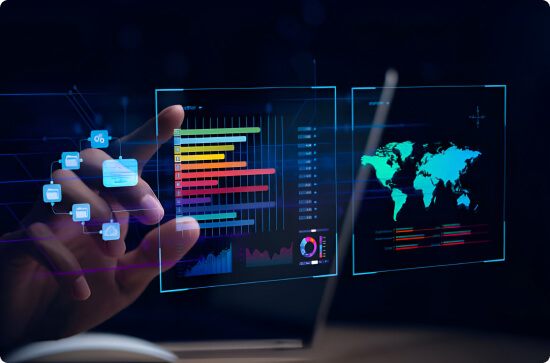
Selecting the right data sources is an essential step in gathering accurate B2B data; this process entails choosing from an array of options like data vendors who provide comprehensive datasets, industry associations that can facilitate accurate niche data, business directories that offer general information across sectors, and online database that is effective for market analysis. Based on the requirement, strategically select the appropriate source that suits your needs.
Collect quality, useable data
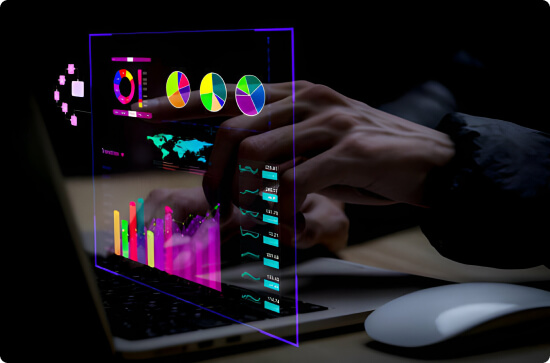
The next step is to collect high-quality data. You can either collect the data by yourself, which might not be that effective, or choose a vendor. We recommend you choose an experienced vendor, like database providers who have over seven years of seasoned expertise in providing reliable and actionable data.
Processing B2B data
Following data acquisition, it is vital to ensure the quality and reliability of the data. In order to do so, we need to prepare the data. Here are some processes to follow:

Data hygiene
Starting with the practice of cleaning data for accuracy, data errors, duplications, and outdated information are to be removed. Proper data hygiene ensures that the data is new and reliable.

Data management
Soon after data hygiene, the data needs to be efficiently categorized and stored. This process includes organizing data and ensuring it is stored in a secure, accessible manner that is ready for use.

Data mining
Once the data is clean, it can be leveraged to extract insights. By using algorithms, we can uncover patterns and correlations with other datasets, which offers an understanding of market trends and customer behavior.

Data licensing
This step ensures legal compliance and proper usage rights for data obtained from external sources, adhering to laws and regulations from data providers.
Verify the collected data
After processing the data, it is imperative to do the following:

Data validation
Ensure data is authentic, complete, and aligned with the intended purpose.

Data verification
Check the collected data is accurate and consistent across sources and make sure it’s reliable.
Adhere to the data compliance and regulatory requirements

The final and essential step in the process of acquiring B2B data is to adhere to data regulations that are in place. Regulations like the General Data Protection Regulation (GDPR) have been passed to maintain data protection and information privacy. Complying with regulatory requirements reflects the commitment to ethical practices and keeps businesses out of legal trouble, maintaining both reputation and the company’s business interest.
The advancements in B2B data solutions

Intent-based sourcing

Solutions for real-time surveys

Deep-dive marketing with B2B data

Lead-tracking and visibility tools

AI-powered B2B data
Why you should consider a database provider: Key advantages
Advantage
Explanation
- Quick Tip

Database Providers' expertise in B2B data
Database providers’ deep-rooted expertise in data services has been instrumental for businesses in refining their marketing strategies. By assisting companies with high-priority data that increase leads and revenues, we are the ideal choice for exceptional B2B data solutions. With flexibility, data purity, and extensive business acumen, we empower businesses to effectively target their marketing efforts, make strategic decisions, and gain a business edge in their respective domains. With a blend of technology and expertise, we empower businesses to tap into the power of data for sustained growth and success.
Final thoughts
Today’s businesses need quality B2B data to explore opportunities, generate leads, conduct market research, and enhance marketing strategies. As competitiveness saturates, businesses seek B2B data to connect with other businesses for collaborations and partnerships. Database Providers in the USA are leading the wave of B2B data with trusted data services.